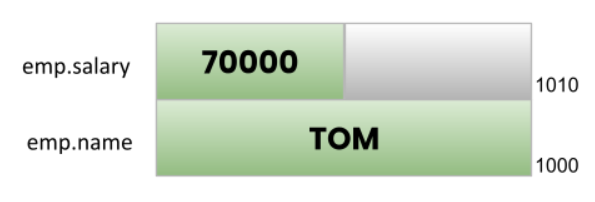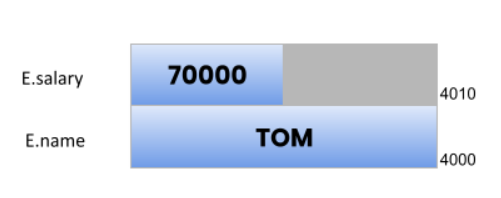
In this tutorial, you will master to pass the structure as function arguments both by call by value and call by reference method. Also, you will learn to return structures to a function with the aid of simple and easy examples.
We assume that you have the basic knowledge about both structures and functions in C before starting this tutorial. If not you can refer to our Functions in C and Structures in C tutorial for a better understanding of this topic.
We can use structures as function arguments just like the general variables do. Structures support both call by value and call by reference procedures. So basically C provides 3 different ways to its users to pass structures to a function.
Let's begin by trying to understand the below given simple program.
// How to pass structure members to a function
#include<stdio.h>
struct employee
{
char name[20];
int id_no;
int salary;
};
// function declaration
void display_structure(char name[], int id_no, int salary);
int main()
{
struct employee emp = {"Tom", 1001, 70000};
display_structure(emp.name, emp.id_no, emp.salary);// function call
return 0;
}
// function definition
void display_structure(char name[], int id_no, int salary)
{
printf("Name of Employee: %s\n", name);
printf("Id No of Employee: %d\n", id_no);
printf("Salary of Employee: %d\n", salary);
printf("\n");
}
In the above code snippet, we have created a structure named employee with 3 members namely name, id_no, and salary. Since the structure is always declared outside the main function, the structure has a global scope that means the life of the structure exists throughout the program.
Just below the structure, we have given the function declaration which gives information to the compiler that it can expect a function in the program. Here the function declaration is not returning any value as its type here given is void. The name of the function is display_strucute which actually prints the values of structure members that are passed as arguments.
Inside the main function the structure variable emp, is declared and initialized thereby allocates some space in the memory. Later the function is called where the actual parameters are passed. Now the formal parameters take the value of actual parameters.
In the end, we have defined our function that prints the structure. The Output will be :
Name of Employee: Tom Id No of Employee: 1001 Salary of Employee: 70000
The downside of this way of passing structure members to a function is that it is helpful in cases where the number of members in the structure is limited.
Another way that c supports is passing the entire structure to the function by passing the structure variable as its argument. This method is also known as call by value method because any changes made to the structure member variables will not reflect in the original structure.
You can witness this by examining the below example:
// Passing entire structure to function as call by value
#include<stdio.h>
#include<string.h>
struct employee
{
char name[10];
int salary;
};
void update(struct employee E)// formal argument
{
E.salary = 80000;
printf("Salary of %s updated to %d\n",E.name,E.salary);
}
int main()
{
struct employee emp;
strcpy(emp.name,"Tom");
emp.salary = 70000;
printf("Salary of %s in main function is given as %d\n",emp.name,emp.salary);
update(emp);//actual argument
printf("Salary of %s after function call is %d\n",emp.name,emp.salary);
return 0;
}
Let's scrutinize the program to understand the concept of call by value clearly. We all know that all programs start with the main() function and so at first we have created a structure variable emp using the below statement.
struct employee emp;
Whenever a structure variable is created, in memory some space will be allocated according to the size of structure members. In our case emp will allocate 14 bytes in the memory. The memory allocation of emp will be like this :

With the help of printf function, the values of structure members are displayed.
In the next line, we have called the user-defined function as follows:
update(emp);
Here, we are passing the entire structure emp (actual argument )to the function definition on functional call. Now the control shifts to the function definition update() where the formal argument E takes the value of actual arguments, i.e the entire structure itself. Below shows the memory allocation.

When comparing the two images you can see the difference in their memory location. This states the fact that both structures are residing in different locations and are entirely independent of each other.
E.salary = 80000;
So here in update() function, E. salary is assigned with a new salary, 80000, and is printed inside that function. When the function is over the control moves back to the main function where we again print the value of salary, which gives you the output 70000.
From this, we can conclude that any changes made on formal arguments do not reflect back on actual arguments in the case of the call by value method.
The output of the above program will be something like this:
Salary of Tom in main function is given as 70000 Salary of Tom updated to 80000 Salary of Tom after function call is 70000
Now let’s discuss a couple of the limitations of the call by value method while passing structure to a function.
To overcome the limitations of call by value , C has made use of pointers to pass the structures. The above program is slightly modified to achieve the method of call by reference which is as follows:
// Passing entire structure to function as call by reference
#include<stdio.h>
#include<string.h>
struct employee
{
char name[20];
int salary;
};
void update(struct employee *E)//E points the location of structure
{
E->salary = 80000;
printf("Salary of %s updated to %d\n",E->name,E->salary);
}
int main()
{
struct employee emp;
strcpy(emp.name,"Tom");
emp.salary = 70000;
printf("Salary of %s in main function is given as %d\n",emp.name,emp.salary);
update(&emp);// passing the address of structure emp
printf("Salary of %s after function call is %d\n",emp.name,emp.salary);
return 0;
}
In this code fragment, on function call instead of passing the structure here, we have passed the address of the structure emp. The formal argument E will take the address and point to the memory location of the structure emp itself.
Now both structures E and emp are residing in the same location and hence any change made on formal argument will flawlessly reflect on the actual argument.
The following depiction clarifies the concept:

Another change we made in our program is instead of using the dot operator to access member variables we used the arrow operator (->) to get the values held by the structure variables.
The output of the program will be :
Salary of Tom in main function is given as 70000 Salary of Tom updated to 80000 Salary of Tom after function call is 80000
Unlike call by value, here the salary modified in update() function is reflected inside the main function also this is because the value modification actually takes place in the original structure itself.
It is also possible to pass an array of structures to a function, just like passing an array of integers.
The following example illustrates the way of passing an array of structures to a function.
#include<stdio.h>
#include<string.h>
struct employee
{
char name[20];
int id_no;
int salary;
};
int main()
{
struct employee emp[3]={
{"TOM",10001,70000},
{"JERRY",10002,75000},
{"GILL",10003,80000},
};
display_structure(emp); //function call
return 0;
}
// function definition
void display_structure(struct employee E[])
{
for(int i=0;i<3;i++){
printf("Employee %d\n",(i+1));
printf("Name: %s\n",E[i].name);
printf("Id_no: %d\n",E[i].id_no);
printf("Salary: %d\n",E[i].salary);
printf("\n");
}
}
Output:
Employee 1 Name: TOM Id_no: 10001 Salary: 70000 Employee 2 Name: JERRY Id_no: 10002 Salary: 75000 Employee 3 Name: GILL Id_no: 10003 Salary: 80000
Passing an array of structures to a function is not at all a difficult task. We need to properly use the array prototype in the function and use a for loop to traverse through each element in the array.
So far we have seen how to pass structures to a function, now it's time to learn the returning of structures to a function.
Here is given an example to calculate the sum of two complex numbers. We know that a complex number contains a real part and an imaginary part. The addition of two complex numbers means the addition of two real parts and the addition of two imaginary parts as shown in the below program.
#include<stdio.h>
#include<conio.h>
struct complex
{
float real;
float imag;
};
struct complex add(struct complex, struct complex);
int main()
{
struct complex c1,c2,c3;
printf("Enter the first complex number:");
scanf("%f%f",&c1.real,&c1.imag);
printf("Enter the second complex number:");
scanf("%f%f",&c2.real,&c2.imag);
c3= add(c1,c2);
if (c3.imag<0)
printf("The sum of two complex numbers is %.1f - %.1fi",c3.real,-c3.imag);
else
printf("The sum of two complex numbers is %.1f + %.1fi",c3.real,c3.imag);
return 0;
}
struct complex add(struct complex x,struct complex y)
{
struct complex z;
z.real=x.real+y.real;
z.imag=x.imag+y.imag;
return z;
};
In the above code snippet, the structure is complex with two members real and image of float data type.
struct complex add(struct complex, struct complex);
This statement is the function declaration where the function name is add and it returns a structure data type and is also passing two structures.
In the main function, we have inputted the two complex numbers using the structure variables c1 and c2. In c3 the value returned from the function add is stored.
The add function takes the two complex numbers as arguments x and y and stores the added value of the real part of x and y in z and similarly for the imaginary part. Finally, the function returns the added value i,e z. Based on the value in c3, the output is displayed as follows:
Enter the first complex number:2.1 3.2 Enter the second complex number:4.5 5.6 The sum of two complex numbers is 6.6 + 8.8i ---------------------------------------------------------------------------------- Enter the first complex number:2 3 Enter the second complex number:-5 -5 The sum of two complex numbers is -3.0 - 2.0i